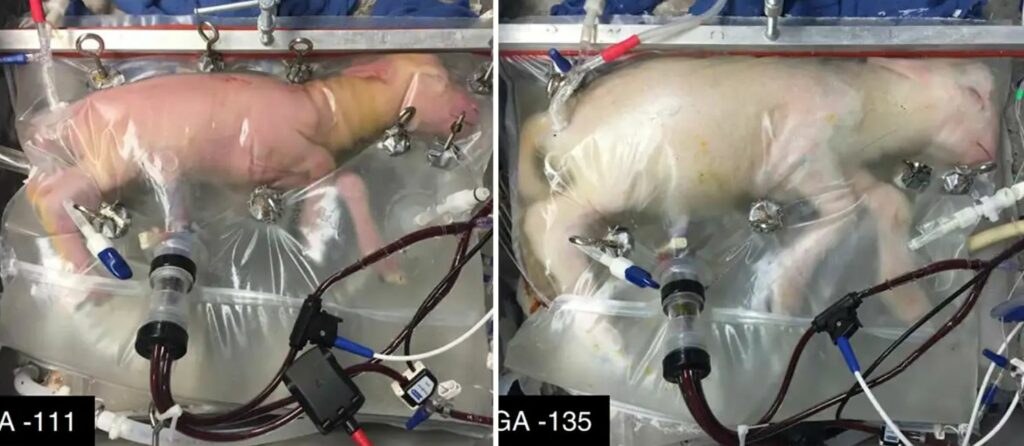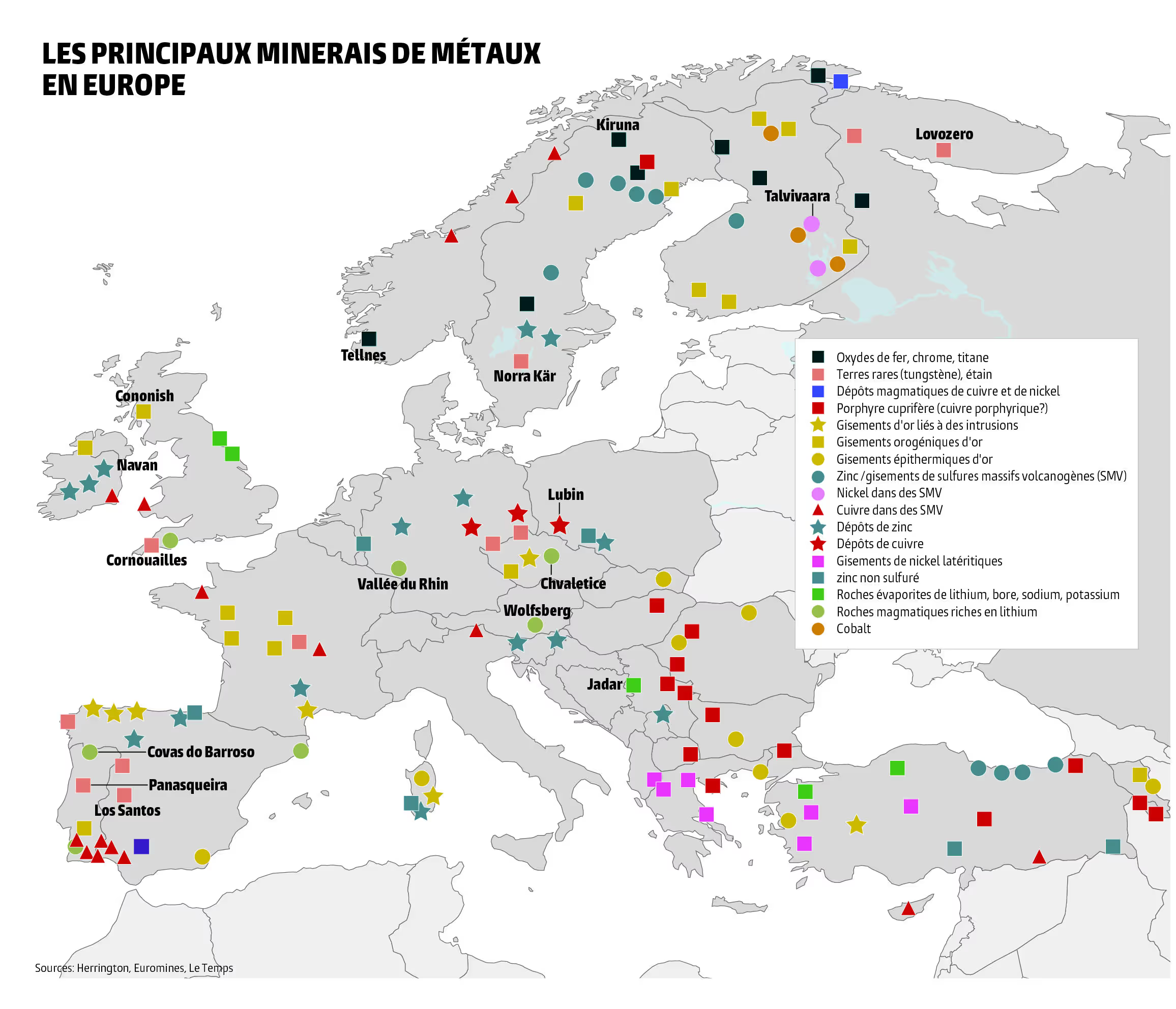“Pregnancy is a barbaric thing. If a disease caused the same problems, we would take it very seriously.[1].”
— Anna Smajdor, bioethicist
Do you dream of leading an army of slaves? Problem is, you don't know how to reproduce humans on an industrial scale. Good news for you, this dream will soon come true thanks to biotechnological crap: ectogenesis, procreation via an artificial uterus also called “Biobag”. Researchers in Suzhou Province in China recently developed artificial wombs driven by artificial “intelligence.” Based on an article published in 2022 in the South China Morning Post, it is an “artificial intelligence system capable of monitoring and taking care of embryos as they develop in an artificial uterine environment.[2].” But Chinese scientists are far from being the only ones working on the artificial reproduction of humans. Mad scientists are competing with other counterparts in each country, in Europe or even in North America.
As usual with these biotechnological innovations that are more delirious than the previous ones, massive propaganda is responsible for neutralizing all resistance, promoting social acceptance and pushing the limits of the absurd. Fundamentalists of the religion of Progress claim that the aim is to remedy the decline in global fertility, to save premature babies or to move towards more equality between men and women. Rather than addressing the root causes of the rise in infertility — a decline in the age of maternity; an exponential increase in toxic substances contaminating the air, water, land and our food; an explosion of physical inactivity and lifestyle-related diseases — it is better to develop a replacement technology to replace the uterus. Long live industrial logic.
How does an artificial uterus work?
“The artificial uterus, or “long-term embryo culture device,” is a container in which mouse embryos develop in a row of cubes filled with nutritious fluids, explains the team led by Professor Sun Haixuan at the Suzhou Institute of Biomedical Engineering and Technology, a subsidiary of the Chinese Academy of Sciences.
Previously, the development process of each embryo had to be monitored, documented, and adjusted manually — a labour-intensive task that became problematic as research work intensified.
The robotic system or “nanny” created today can monitor embryos with an unprecedented level of precision, while moving up and down the production chain, 24 hours a day, according to the paper published by the scientists.
Artificial intelligence technology allows the machine to detect the slightest signs of change in the embryos and to adjust carbon dioxide, food, or environmental parameters.”
According to Stephen Chen, author of the article in South China Morning Post, the only obstacle to the deployment of this technology in humans is ethical. Historians have taught us that the “ethical” obstacles to technological progress were numerous in the 19th century.[3]. We saw the result.
The scientific entrepreneurs definitely think of everything since the machine for producing neo-humans comes with the eugenics option:
“The system can even classify embryos based on their health and developmental potential. When an embryo has a major defect or dies, the machine alerts a technician to remove it from the womb-shaped receptacle.”
Eugenics policy can now be delegated to the machine. No need to get your hands dirty anymore. A major advance for the human primate, isn't it?
What is the long-term objective according to Stephen Chen?
“The massive production of babies in an artificial womb factory could contribute to maintaining the population in a country where citizens do not want to have children.”
By dint of idealizing state-owned societies, we too often forget that since their emergence in the Neolithic they have been similar to the breeding of humans reduced to the state of cattle.[4]. The power of a state is essentially based on the resources at its disposal, and human resources are one of them. In the past, you needed arms in mines and trenches. Since the 1950s, population has been a market. The human being is reduced to the role of consumer, thus making it possible to sell all kinds of products. The more consumers there are, the greater the potential for growth. That's why a Jeff Bezos wants the world's population to continue to grow[5].
Below are images of lamb fetuses that were extracted from their mothers before being placed in an artificial womb for several weeks. This “feat” was achieved in 2017 by a team of scientists based in Philadelphia in the United States.


Progress in inhumanity
In our wonderful industrialized countries, where nature and dignity die, procreation has become a constraint, an embarrassment, even a handicap for the progressive elite.
“Surveys show that young Chinese women are increasingly rejecting the traditional priorities of marriage and children, despite the radical relaxation of one-child policies and other state incentives.
The low birth rate is a global concern, especially in developed societies. When SpaceX founder Elon Musk started a social media discussion about “population collapse” two weeks ago, some tech gurus described the artificial womb as the best solution. Because it would reduce the pain, risks, and cost of motherhood for a woman. It's good for their careers.
Even on the Chinese internet and social media platforms, discussions are growing about artificial uterus technology and the possibility of using it to reverse the demographic trend.”
We leave it up to the reader to assess the degree of alienation required for believe that giving birth is a symbol of underdevelopment, a retrograde, even primitive act.
Techno-progressive propaganda works to push back moral barriers to obtain our consent, such as this recent article published in the left-wing journal Technologist WIRED. Denying the structural link between growing inequalities and technological development, the author explains to us that technology would make it possible to evolve towards a more egalitarian society:
“Ectogenesis could transform reproductive work and reduce the risks associated with reproduction. It could allow people with a uterus to reproduce as easily as cisgender men: without risking their physical health, economic security, or bodily autonomy. By removing natural gestation from the procreation process, ectogenesis could offer an equal starting point for people of all genders and genders, especially for queer people who want to have children without having to resort to the morally ambiguous option of surrogacy.
If safe and effective ectogenesis were made accessible — instead of being privatized, which could further increase social and economic inequalities — technology could lead to a more prosperous and egalitarian society.”
It is always useful to remember that, contrary to what the article by WIRED, the opinions of trans or queer people differ on biotechnologies[6]. Many of them are fully aware that these technologies promote the expansion of capitalism. The latter penetrates our intimate sphere ever more deeply to reprogram human matter and adapt it to the needs of the technological system.
This technosalopery — the artificial uterus — would also make it possible to solve one of the main ethical problems between proponents and opponents of abortion. By making it possible to transfer the embryo into an artificial uterus at the beginning of pregnancy, a woman could thus have an abortion without killing the fetus.
In several articles published by the British newspaper The Guardian (here[7] And there[8]), other arguments are put forward to defend ectogenesis:
- Artificially prolong the fetal development of premature babies in order to increase their chances of survival;
- Help women without a uterus (at birth or following an illness) to be able to procreate;
- 15% of women drink alcohol during pregnancy and 5% of them use illegal drugs, which are risky behaviors for the fetus;
- For women who choose in vitro fertilization, an artificial uterus would save time, suffering and expenses;
- Pregnancy can be dangerous for women who are elderly or disabled by health problems;
- The artificial uterus could become a good alternative to surrogacy (surrogacy), which is often rightly criticized as a commodification of women's reproduction and bodies;
- The artificial uterus would make it possible to put women, trans women and gay male couples on an equal footing;
- The artificial uterus would promote gender equality by freeing women from the dangers of pregnancy;
- Single men could also choose to have children on their own, and thus free themselves from their dependence on the female sex to procreate.
To get rid of our animal and terrestrial condition, this is the promise of the religion of Progress.
But Eleanor Robertson expects far less joyful consequences, including “new forms of surveillance, control, and coercion.” If it becomes possible to keep a fetus alive outside a woman's body, then the state could take children away from parents considered “unfit.” Pregnant women who test positive for drugs are already imprisoned for “poisoning.” According to Robertson, it is easy to imagine intrusive and authoritarian policies that target disadvantaged communities in order to “discipline” them.
Market forces could strongly encourage ectogenesis because natural gestation is a liability in a competitive labour market. In addition, if the costs associated with artificial gestation fall below a natural pregnancy, the former will be greatly favoured.
“The artificial womb could be the type of tool that would allow the state and the market to put the logic of efficiency at the heart of one of the most sacred human activities, without the messy side of the mother-to-be interfering with the process.
Such a system could end up considering in utero pregnancies “natural” as our culture sees home births: a risky option, the preserve of extreme hippies, poor people who are to be pitied, or sensational and accidental social cases.
Visible pregnancies may eventually become weird, or even be stigmatized. Giving birth to a child could be associated with poverty, ignorance, or irresponsibility[9].”








